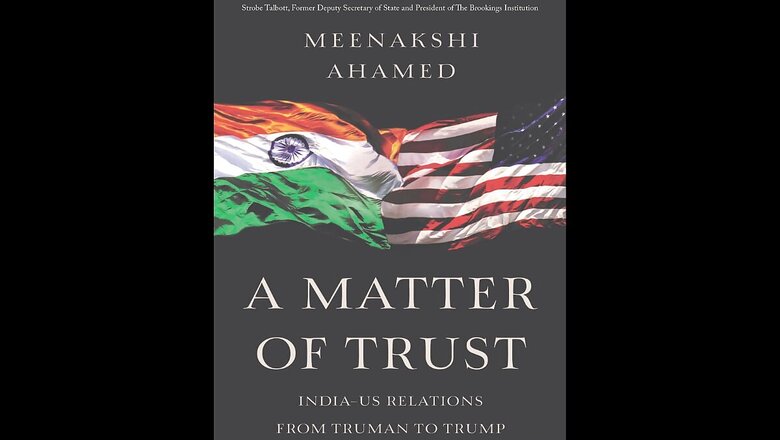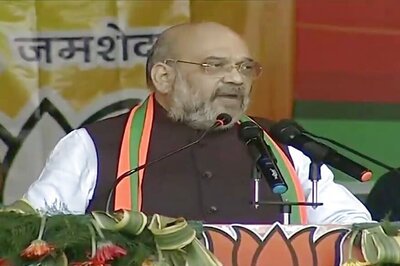
views
The nuclear deal transformed US-India relations. The two countries developed a strategic partnership based on long-term cooperation rather than one that was plagued with conflicts, misunderstandings and the vagaries of prejudices and personalities. The negotiations spanned most of Bush’s second term and were often contentious. There were times when the talks almost collapsed and then one side or other would revive the project. On one infamous occasion, the US delegation snapped and walked out of a dinner after failing to find a compromise and headed back to Washington. The lead negotiators texted and spoke until dawn before agreeing to continue. The US president or the Indian prime minister had to personally intervene on more than one occasion to save the talks from getting derailed. The current foreign minister, S. Jaishankar, was one of the key players and remembers it vividly. ‘When I look back on it today, I was deeply, passionately involved—in what can only be called a high-voltage negotiation that spanned several continents and took place in different capitals. It was wholly unique and probably the most difficult negotiation in the history of US-India relations. It had a Rashomon quality to it, with many players and agendas; but in the end, we all came together and achieved something historic.’
The two sides had barely four months before the state visit to find solutions to very complicated problems that were also politically sensitive. Following Secretary Rice’s visit to New Delhi earlier that year, (Nicholas) Burns and (Shyam) Saran spent several intense closed-door meetings, between April and July 2005, to address the outline of an agreement and tackle outstanding issues, like Tarapur and the technical problems of processing its spent fuel, which had cast a shadow over so many previous negotiations.
In July 2005, the Indian team arrived in Washington three days before the prime minister to finalize the joint agreement. The deal almost fell through over two issues. The first was semantic and over the recognition of India’s status as a nuclear state. The second was India’s requirement that its military nuclear programme remain off-limits to US supervision.
The US wanted guarantees that the civil nuclear cooperation was not going to be misused to enhance India’s military capability. Bringing India, a nuclear pariah, in and formally recognizing it as a nuclear state without giving it the same status as the original five proved to be a challenge. India was sensitive about being recognized as a responsible nuclear power. In the end, the issue was resolved by some inventive language that satisfied both parties. It was agreed that India would reciprocally agree that it would be ready to assume the same responsibilities and practices and acquire the same benefits and advantages as other leading countries with advanced nuclear technology, such as the United States.
The US had to make sure that India would agree to inspections to satisfy the non-proliferation critics, who claimed the whole deal undermined the rationale for aiding countries which gave up nuclear arms, as first put forward under Eisenhower’s Atoms for Peace programme. But India resisted even minimal steps to allow inspections. The Indian position was ‘that we could not risk the cooperation of the US on the civilian side, which allowed inspections, and have them flow into our military side. We had started with a civilian and then morphed into a weapons programme, so it was hard to separate the facilities.’
The US had accommodated many of India’s requirements while trying to abide by US law, although the issue of inspections and safeguards remained a major hurdle. But when the prime minister’s plane landed, the joint statement that the US and Indian teams had worked on together started to fall apart. Saran and his team briefed the prime minister and his delegation about the status of the negotiations, and an extensive debate broke out among the Indians.
Anil Kakodkar, head of the Department of Atomic Energy (DAE), effectively killed the deal by raising many red flags. After being subjected to thirty years of sanctions, DAE was wary of US intentions and reluctant to contractually obligate India to open its facilities to international inspectors, for a civil nuclear agreement Kakodkar did not know he could trust. (Ashley) Tellis remembers the interactions well: ‘They [the Indians] were suspicious that our motives were not as altruistic as we imagined, and it hung over the negotiations like a dark cloud.’
Kakodkar was not the only person who questioned the agreement on the Indian side. In the absence of a consensus, Saran was directed to inform his counterpart in the US that the prime minister was not in agreement with the nuclear cooperation section of the joint declaration. Saran was asked to find a more neutral formulation and frame it as positively as possible, and inform the other side that they were continuing deliberations.
Saran conveyed the message to Burns on 17 July, the night before the heads of the two governments were to meet. Burns informed Rice that the big announcement, and strategic partnership, was not happening, despite the months of negotiations and mutual concessions. There was palpable disappointment among the US team.
Rice recalled it had been a long day, and they were all tired. ‘Well, if they don’t want to get out of the nuclear ghetto, I can’t do anything about it,’ she told her team. They had worked so hard and come so far; they felt let down by the India team. She went to sleep and woke up at 4.30 am. ‘I am not letting this go down … I am not prepared to let this fail.’ She decided to give the negotiations one last try. She woke Nick Burns half an hour later and asked to see Manmohan Singh at 8 am at Blair House, before his 10 am meeting with Bush, but the prime minister turned her down as he did not want to say no to her. Rice refused to take no for an answer and insisted on meeting with him. It was Natwar Singh who finally persuaded the prime minister, saying he could not deny the secretary who had put so much of her own muscle into the partnership.
Rice tried to convince the soft-spoken prime minister by framing this as a historic opportunity: ‘Mr Prime Minister, this is the deal of a lifetime. You and President Bush are about to put US-Indian relations on a fundamentally new footing … let’s get it done before you see the president.’ She also explained that, without the guarantees and inspections, Congress would not approve the deal. Manmohan Singh admitted to Rice that they had not reached a consensus within their own delegation, and given the issues raised, he was concerned that he could not sell the current agreement to Parliament. Rice asked what the obstacles were from their side that were preventing an agreement and offered to see if she could find a solution.
The prime minister nodded and asked Natwar Singh, his foreign minister who was with him in the room, to call in Anil Kakodkar. Kakodkar was asked to write down on a piece of paper the requirements that would satisfy the scientific community in India. He listed a set of demands such as India-specific safeguards and full civil nuclear cooperation from A to Z, and that the US not be able to cherry-pick which aspects of civil nuclear technology they would share. Rice looked at the list and agreed to the conditions. It was done. Manmohan Singh left to meet Bush.
The principals, Bush and Singh, began their meeting, while Saran and Burns huddled in the Roosevelt Room and found language that was acceptable to both sides. Minutes before the press briefing, as the leaders emerged from the meeting, they were handed the document and the strategic partnership was announced on the White House lawns on 18 July 2005. It took many officials in both countries by surprise. Ambassador Sen and Saran credit Rice’s persistence and hard work with getting it done.
Read all the Latest News, Breaking News and Coronavirus News here. Follow us on Facebook, Twitter and Telegram.
















Comments
0 comment